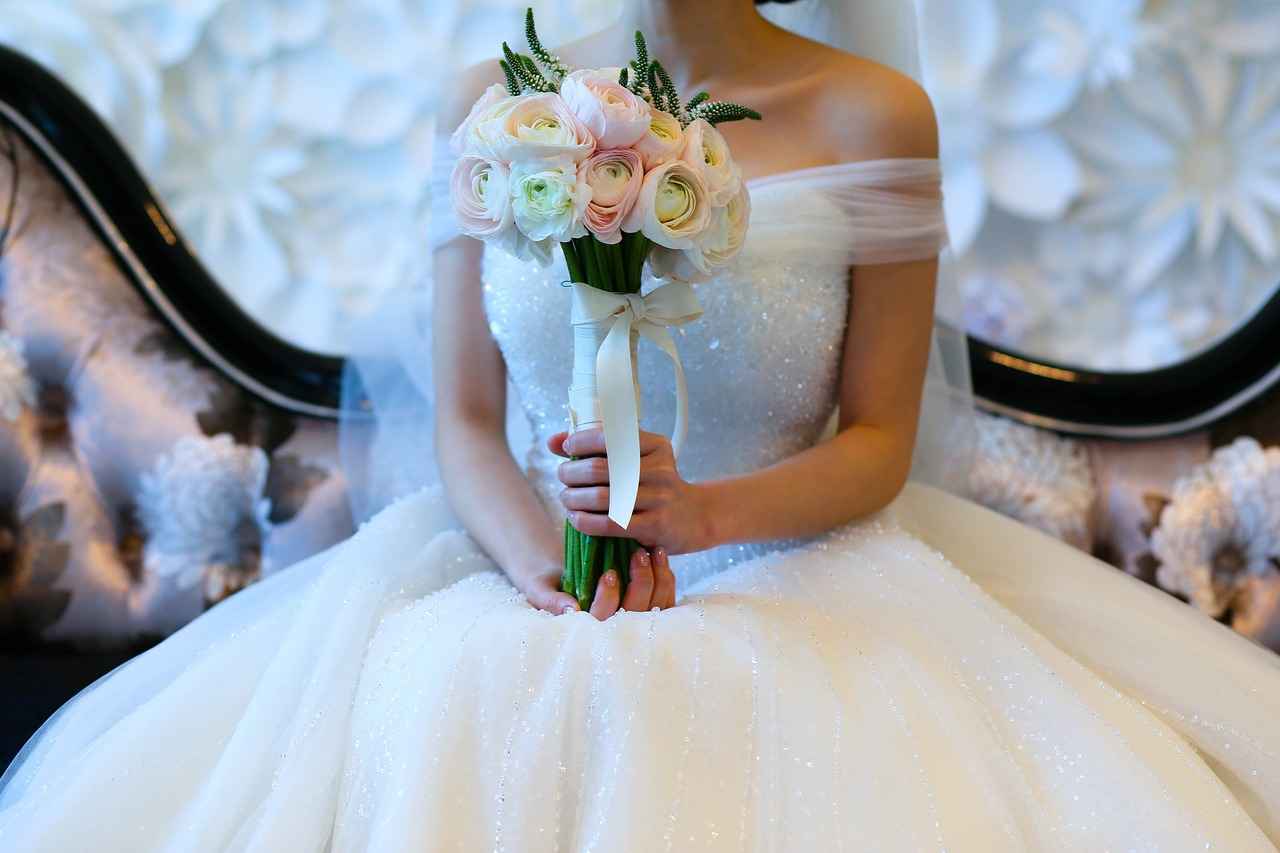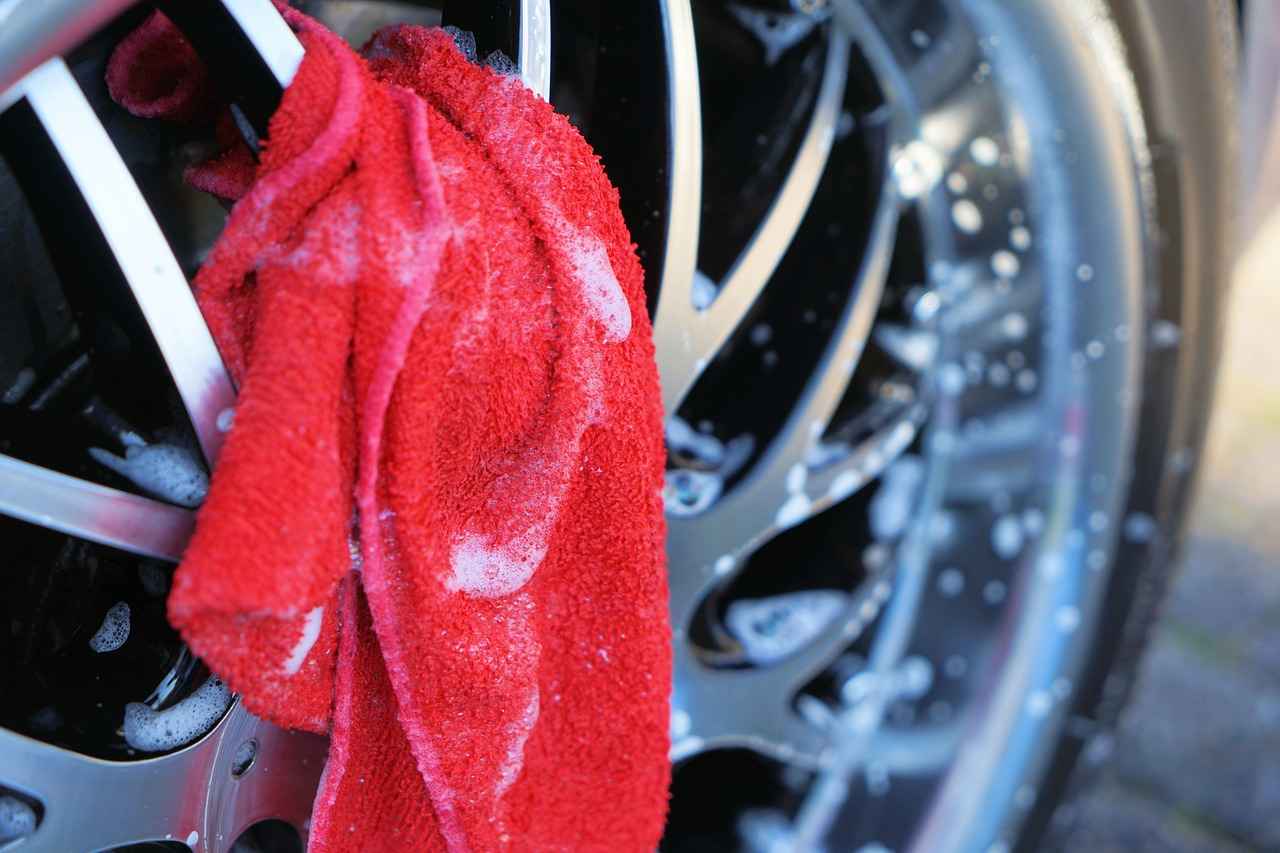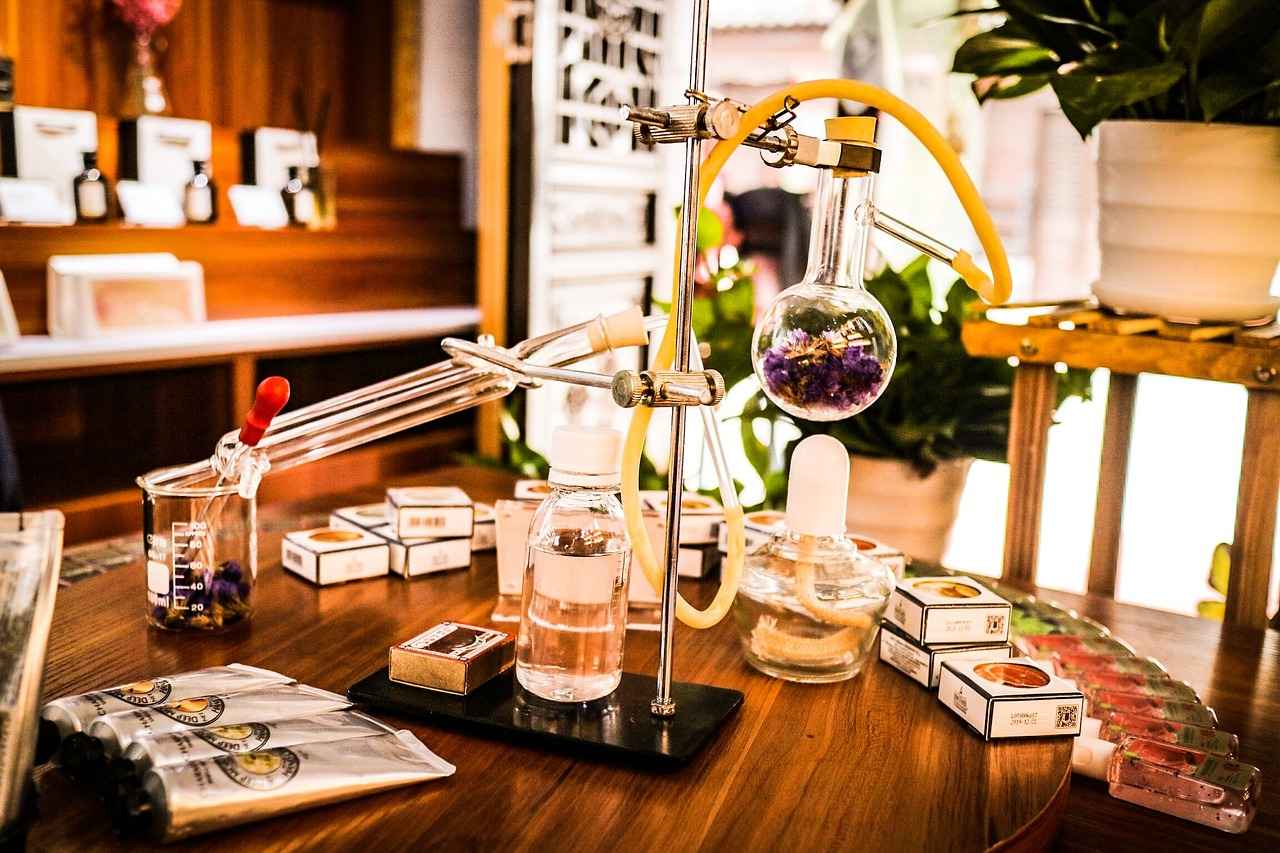This comprehensive guide will explore the best practices for washing and caring for slip dresses, ensuring they maintain their beauty and longevity while providing practical tips for every fashion lover.
Why Choose Slip Dresses?
Slip dresses are versatile wardrobe staples that offer both comfort and style. Their fluid silhouette and lightweight fabric make them perfect for layering or wearing alone. With their ability to transition from day to night, slip dresses have become a favorite among fashion enthusiasts.
How to Properly Wash Your Slip Dress?
Washing slip dresses requires special attention to the fabric types and care instructions. Knowing the right methods will help you keep your dress looking fresh and new.
- Machine Washing: Is It Safe? – Many slip dresses can be machine washed, but it’s essential to check the care label. Use a gentle cycle and cold water to prevent damage.
- Hand Washing Techniques for Delicate Fabrics – Hand washing is often the safest method for delicate slip dresses. Use lukewarm water and a mild detergent, gently agitating the fabric to avoid wear.
What Fabrics Are Commonly Used for Slip Dresses?
Different fabrics can affect how you care for your slip dress. Common materials include:
| Fabric Type | Care Instructions |
|---|---|
| Silk | Dry clean or hand wash with cold water and mild detergent. |
| Satin | Machine wash on a gentle cycle or hand wash; avoid fabric softeners. |
| Polyester | Machine wash with cold water; tumble dry on low heat. |
How to Dry Your Slip Dress Safely?
Drying methods are crucial for maintaining the shape and fabric integrity of slip dresses. Discover the best practices for air drying and machine drying.
- Air Drying: The Best Method? – Air drying is often recommended as it helps prevent shrinkage and damage. Hang your dress in a shaded area to avoid direct sunlight.
- Can You Use a Dryer for Slip Dresses? – Using a dryer can be risky; however, if the care label permits, use a low heat setting and remove the dress while slightly damp.
Storing Your Slip Dress: What to Consider?
Proper storage is essential for maintaining the quality of your slip dresses. Here are some tips:
- Hanging vs. Folding: Which is Better? – Hanging is generally preferable to avoid wrinkles, but ensure you use padded hangers to maintain the dress’s shape.
- Protecting Against Dust and Pests – Store your dresses in breathable garment bags to keep them safe from dust and insects.
How to Remove Stains from Slip Dresses?
Stains can be particularly concerning for slip dresses. Here are some effective stain removal techniques:
- Common Stains and Their Solutions – For oil stains, sprinkle talcum powder to absorb the grease before washing. For wine stains, blot with cold water and a mild detergent.
- When to Seek Professional Cleaning Help? – If stains persist or if your dress is made of silk, consider taking it to a professional cleaner.
How to Maintain the Color of Your Slip Dress?
Fading can be a concern for slip dresses, especially in vibrant colors. Discover effective methods to maintain your dress’s color:
- Washing Techniques to Prevent Color Loss – Wash your slip dress inside out and use cold water to minimize fading.
- Storing Tips for Color Preservation – Avoid storing in direct sunlight and use acid-free tissue paper to prevent color transfer.

Why Choose Slip Dresses?
Slip dresses have emerged as a timeless staple in women’s fashion, celebrated for their versatility and comfort. These elegant garments can effortlessly transition from casual daytime wear to sophisticated evening attire, making them a must-have in any wardrobe. But what exactly makes slip dresses so appealing?
- Versatile Styling Options: Slip dresses can be styled in numerous ways. Pair them with a denim jacket for a relaxed look, or layer with a blazer for a polished ensemble suitable for the office. The adaptability of these dresses makes them perfect for various occasions.
- Comfort Meets Elegance: Made from soft fabrics like silk, satin, or modal, slip dresses provide a luxurious feel against the skin. Their lightweight nature allows for easy movement, making them ideal for warm weather or relaxed outings.
- Timeless Fashion Statement: Slip dresses have a rich history in fashion, often associated with iconic styles from the 90s and 2000s. Their classic silhouette ensures they remain in vogue, allowing wearers to embrace a chic, minimalist aesthetic.
- Layering Potential: These dresses are perfect for layering. During colder months, they can be worn over turtlenecks or under long coats, allowing for creative expression without sacrificing warmth.
- Easy to Care For: Many slip dresses are machine washable, and even delicate fabrics can be cared for with gentle hand washing. This ease of maintenance makes them a practical choice for busy individuals.
Understanding the appeal of slip dresses not only enhances your appreciation for this wardrobe essential but also allows you to make informed choices when it comes to styling and care. Whether you’re dressing for a casual brunch or a formal event, the slip dress stands out as a versatile option that combines fashion with functionality.
With a variety of colors and prints available, slip dresses can reflect personal style while remaining unique and fashionable. From solid hues to floral patterns, the options are endless, ensuring that there’s a slip dress for every taste.
Incorporating slip dresses into your wardrobe can simplify getting dressed while ensuring you look effortlessly chic. With the right accessories and layering pieces, you can create a multitude of looks that suit any occasion.
In summary, slip dresses are not just a trend; they are an enduring element of fashion that offers versatility, comfort, and style. Understanding their appeal can guide you in making the most of this essential garment, ensuring you look and feel your best.

How to Properly Wash Your Slip Dress?
When it comes to caring for your slip dress, understanding the right washing techniques is essential. Slip dresses, known for their elegance and versatility, often come in delicate fabrics that require special attention. In this section, we will explore the best practices for washing your slip dress, ensuring it remains in pristine condition.
Washing your slip dress properly not only helps maintain its appearance but also prolongs its lifespan. Slip dresses are often made from materials like silk, satin, or polyester, each requiring different care methods. By adhering to the correct washing techniques, you can avoid common issues such as color fading, fabric damage, and shrinkage.
- Read the Care Label: Always start by checking the care label on your slip dress. This label provides vital information about the fabric and recommended washing methods.
- Machine Washing: If the label indicates that machine washing is safe, use a gentle cycle with cold water. It’s advisable to place the dress inside a mesh laundry bag to prevent snagging.
- Hand Washing: For delicate fabrics such as silk, hand washing is often the safest option. Fill a basin with cool water and a few drops of gentle detergent. Submerge the dress and gently agitate the water. Rinse thoroughly to remove all soap residue.
Stains can be particularly challenging on slip dresses. It’s important to act quickly:
- Identify the Stain: Different stains require different treatments. For example, oil stains may need a specific stain remover, while wine stains can often be treated with a mixture of salt and water.
- Spot Cleaning: Use a soft cloth or sponge to apply a mild detergent directly to the stain. Gently blot rather than rub, as rubbing can damage the fabric.
Once your slip dress is washed, drying is the next crucial step:
- Air Drying: The best method for drying slip dresses is to lay them flat on a clean, dry towel or hang them on a padded hanger. Avoid direct sunlight to prevent fading.
- Avoiding the Dryer: Using a dryer can cause shrinkage and damage to delicate fabrics. It’s best to avoid this method altogether for your slip dress.
To keep your slip dress looking fresh and new, consider these tips:
- Store Properly: Always store your slip dress in a cool, dry place. Use a breathable garment bag to protect it from dust and pests.
- Avoid Overwashing: Frequent washing can wear out the fabric. Spot clean when possible to extend the time between washes.
By following these guidelines, you can ensure that your slip dress remains a staple in your wardrobe for years to come. Proper washing techniques not only enhance the dress’s beauty but also preserve its fabric integrity, allowing you to enjoy its elegance without worry.
Machine Washing: Is It Safe?
Machine washing slip dresses can be a convenient option for many, but it comes with its own set of guidelines to ensure your dress remains in pristine condition. While many slip dresses are designed to withstand the rigors of machine washing, it is crucial to always check the care label for specific instructions. This section will delve into the dos and don’ts of machine washing slip dresses, providing you with essential tips for maintaining their beauty and longevity.
- Read the Care Label: Always start by checking the care label for specific washing instructions. Some fabrics may require special handling.
- Sort Your Laundry: Wash slip dresses with similar colors to prevent color bleeding. Dark colors should be washed separately from lighter shades.
- Use a Garment Bag: Placing your slip dress in a mesh garment bag can protect it from snagging and tangling with other items in the wash.
- Use Cold Water: Cold water helps to prevent shrinkage and color fading. It is gentle on fabrics, making it suitable for delicate slip dresses.
- Choose a Gentle Cycle: Opt for the gentle cycle on your washing machine. This setting reduces agitation, protecting the fabric.
- Use Mild Detergent: A mild, liquid detergent is preferable as it is less abrasive than powder detergents, which can leave residues.
- Avoid Fabric Softeners: Fabric softeners can leave a residue that dulls the fabric’s sheen. Instead, consider using vinegar as a natural alternative.
- Do Not Overload the Machine: Overloading can cause friction and damage your slip dress. Wash it with a few other lightweight items.
- Skip the Dryer: High heat can cause shrinkage and ruin the fabric. Always air dry your slip dress instead.
Once your slip dress has been washed, it’s important to handle it with care. Gently remove it from the washing machine and avoid wringing or twisting the fabric, as this can distort its shape. Instead, lay it flat on a clean towel to absorb excess water before air drying. Hang it in a shaded area to prevent fading from direct sunlight.
By following these dos and don’ts, you can confidently machine wash your slip dresses, ensuring they remain as stunning as the day you bought them. Remember, the key to longevity lies in proper care and attention to detail, so always prioritize the specific needs of your garment.
Hand Washing Techniques for Delicate Fabrics
When it comes to caring for your delicate slip dresses, hand washing is often the safest and most effective method. This technique allows you to gently clean your garments without risking damage that could occur from more aggressive washing methods. Below, we will explore effective hand washing techniques that ensure your slip dresses remain in pristine condition.
Slip dresses are typically made from delicate fabrics such as silk, satin, or lightweight polyester. Machine washing can cause fraying, color fading, or even shrinkage. By opting for hand washing, you maintain the integrity of the fabric while extending the lifespan of your dress.
- Gentle detergent: Choose a mild detergent specifically designed for delicate fabrics.
- Clean basin or sink: Ensure it is free from any residues that could stain your dress.
- Cold water: Use cold water to protect the fabric and prevent color bleeding.
- Towels: Have clean, dry towels ready for drying.
Follow these steps for an effective hand wash:
- Prepare the wash basin: Fill a clean basin or sink with cold water and add a small amount of gentle detergent. Mix the water to create a soapy solution.
- Submerge the dress: Gently place your slip dress into the soapy water, ensuring it is fully submerged.
- Soak: Allow the dress to soak for about 5-10 minutes. This helps loosen any dirt or oils.
- Gently agitate: Using your hands, gently swish the dress in the water. Avoid scrubbing or twisting, as this can damage the fabric.
- Rinse thoroughly: Drain the soapy water and refill the basin with clean, cold water. Rinse the dress until all detergent is removed. You may need to repeat this step a few times.
- Remove excess water: To remove excess water, lay the dress flat on a clean towel, roll it up, and gently press. Avoid wringing or twisting.
After washing, it’s crucial to dry your slip dress properly:
- Air drying: Lay the dress flat on a clean, dry towel or hang it on a padded hanger to air dry. Avoid direct sunlight, as this can fade colors.
- Never use a dryer: The heat from a dryer can cause shrinkage and damage to the fabric.
To ensure the best results, consider these additional tips:
- Always check care labels: Before washing, read the care label for specific instructions related to your dress.
- Use cold water: Cold water is less likely to cause color bleeding and shrinkage.
- Test for colorfastness: If unsure about the color, test a small, inconspicuous area with water to check for bleeding.
By following these hand washing techniques, you can ensure that your delicate slip dresses remain beautiful and well-maintained for years to come. With proper care, your garments will continue to reflect your unique style and elegance.

What Fabrics Are Commonly Used for Slip Dresses?
When it comes to slip dresses, the choice of fabric plays a significant role in how you care for them. Different materials have unique properties that dictate their washing and maintenance requirements. Understanding these fabrics can help you preserve your slip dress’s beauty and longevity. In this section, we will explore some of the most common fabrics used in slip dresses and their specific care instructions.
Silk is a classic fabric choice for slip dresses, celebrated for its softness and elegance. However, it requires special care to maintain its luxurious feel. Always check the care label, but generally, hand washing in cold water with a gentle detergent is recommended. Avoid wringing the fabric, as it can cause damage. Instead, lay it flat to dry away from direct sunlight to prevent fading.
Satin slip dresses offer a beautiful sheen and are often made from polyester or silk. While they can be machine washed, it’s advisable to use a gentle cycle and cold water. To maintain their shine, avoid using fabric softeners and opt for air drying instead of tumble drying. If you do use a dryer, set it to a low heat to minimize risk.
Polyester is a popular choice for slip dresses due to its durability and ease of care. It is generally machine washable and can withstand higher temperatures. However, to prevent shrinking and fading, wash in cold water and tumble dry on low. This fabric is less prone to wrinkling, making it an excellent option for those on the go.
Chiffon slip dresses are light and airy, perfect for warm weather. However, they can be delicate, so hand washing is often the best method. Use cold water and a mild detergent, and avoid twisting or wringing the fabric. To dry, hang it up or lay it flat, ensuring it is kept away from direct sunlight to prevent color fading.
Lace adds a romantic flair to slip dresses but requires careful handling. Depending on the lace’s composition, it may need to be hand washed or dry cleaned. Always refer to the care label, and if washing by hand, use cold water and a gentle detergent. Lay flat to dry to maintain the shape and avoid stretching.
Velvet slip dresses are perfect for evening wear, offering a rich texture and depth. They can be more challenging to care for, often requiring dry cleaning to maintain their structure and appearance. If you must wash it, use a gentle cycle and cold water, but always check the label first.
In summary, understanding the different fabrics used in slip dresses is crucial for proper care. By following the specific washing requirements for each material, you can ensure that your slip dresses remain beautiful and last for years to come. Always refer to care labels for the best results and consider the unique properties of each fabric when deciding on washing methods.
Silk Slip Dresses: Special Care Required
Silk slip dresses are a timeless addition to any wardrobe, renowned for their luxurious feel and elegant drape. However, their delicate nature demands extra care to maintain their beauty and longevity. Understanding how to handle silk effectively is crucial to prevent damage and preserve its exquisite texture.
Silk is a natural fiber produced by silkworms, known for its softness and luster. Its unique properties make it a popular choice for slip dresses, but these same characteristics also make it susceptible to damage. When caring for silk, it’s essential to recognize its vulnerabilities, such as:
- Water sensitivity: Silk can be easily stained or watermarked.
- Color fading: Exposure to sunlight can lead to discoloration.
- Wrinkling: Silk is prone to creasing, requiring careful handling.
When it comes to washing silk slip dresses, opting for gentle methods is key. Here are some effective techniques:
- Hand washing: Fill a basin with cold water and a few drops of mild detergent. Gently agitate the water and submerge the dress, allowing it to soak for about 5-10 minutes. Rinse thoroughly with cold water.
- Machine washing: If the care label permits, place the dress in a mesh laundry bag. Use a delicate cycle with cold water and a gentle detergent.
Drying silk slip dresses requires special attention to prevent damage:
- Air drying: Lay the dress flat on a clean, dry towel to absorb excess water. Avoid wringing or twisting the fabric, which can cause stretching.
- Avoid direct sunlight: Always dry silk in a shaded area to prevent fading.
Proper storage is critical to maintaining the quality of your silk slip dress. Here are some tips:
- Hanging: Use padded hangers to prevent creases and maintain the dress’s shape.
- Breathable garment bags: Store the dress in a breathable fabric bag to protect it from dust while allowing air circulation.
Stains can be particularly challenging on silk. Here’s how to tackle them:
- Immediate action: Blot the stain gently with a clean cloth to absorb excess liquid.
- Spot cleaning: Use a silk-safe stain remover or a mixture of water and mild detergent for spot treatment.
To keep your silk dress looking vibrant, consider the following:
- Washing in cold water: This helps preserve the color and prevents fading.
- Storing in a dark place: Avoid exposure to sunlight during storage to maintain color integrity.
By following these guidelines, you can ensure that your silk slip dresses remain as stunning as the day you bought them. With a little extra care, you can enjoy the elegance and luxury of silk for many seasons to come.
Satin vs. Polyester: What’s the Difference?
When it comes to choosing the perfect slip dress, understanding the differences between satin and polyester is essential. Both fabrics have unique properties that influence their appearance, feel, and care requirements. This section will clarify these differences, helping you make an informed decision about which material is best suited for your style and maintenance preferences.
Satin is a luxurious fabric known for its smooth, glossy surface and soft texture. Traditionally made from silk, modern satin can also be produced from synthetic fibers like polyester. The key characteristics of satin include:
- Shine: Satin has a distinctive sheen that enhances the overall elegance of the dress.
- Softness: The smooth texture of satin feels gentle against the skin, making it a popular choice for evening wear.
- Weight: Satin is typically heavier than polyester, giving it a more structured drape.
Polyester is a synthetic fabric that is widely used in clothing due to its durability and versatility. While it may not have the same luxurious feel as satin, polyester slip dresses offer several advantages:
- Durability: Polyester is known for its strength and resilience, making it less prone to wear and tear.
- Wrinkle Resistance: Unlike satin, polyester tends to resist wrinkles, ensuring your dress maintains its shape throughout the day.
- Affordability: Generally, polyester dresses are more budget-friendly compared to their satin counterparts.
Caring for satin and polyester slip dresses requires different approaches due to their distinct properties. Here’s a breakdown of the care methods:
- Satin: Due to its delicate nature, satin should ideally be hand washed in cold water with a gentle detergent. Avoid wringing or twisting the fabric to prevent damage.
- Polyester: Polyester can often be machine washed on a gentle cycle. It is advisable to use cold water and a mild detergent to maintain the fabric’s integrity.
Choosing between satin and polyester ultimately depends on your personal preferences and lifestyle:
- If you prioritize luxury and elegance, satin may be the better option for special occasions.
- If you seek durability and easy maintenance, a polyester slip dress might be more suitable for everyday wear.
In summary, while both satin and polyester slip dresses have their unique benefits, understanding their differences will help you select the right fabric based on your needs. Whether you opt for the luxurious feel of satin or the practical nature of polyester, proper care will ensure your slip dress remains a staple in your wardrobe for years to come.

How to Dry Your Slip Dress Safely?
When it comes to caring for your slip dress, drying methods play a crucial role in maintaining the shape and fabric integrity. Choosing the right drying technique can significantly affect the longevity of your garment. In this section, we will explore the best practices for both air drying and machine drying slip dresses, ensuring that you can keep your favorite pieces looking flawless.
The drying process is essential for preserving the delicate fabrics commonly used in slip dresses. Improper drying can lead to shrinkage, distortion, and even permanent damage. Understanding the nuances of drying can help you maintain the original beauty of your dress.
Air drying is widely regarded as the safest method for drying slip dresses. This technique helps to prevent the risks associated with heat exposure, which can lead to fabric damage. Here are some best practices for air drying:
- Lay Flat or Hang: Depending on the fabric, you can either lay your dress flat on a clean, dry towel or hang it on a padded hanger away from direct sunlight.
- Avoid Wrinkles: Ensure that the dress is smooth and free of wrinkles before drying. This can help maintain its shape.
- Use a Well-Ventilated Area: Choose a space with good air circulation to speed up the drying process and prevent musty odors.
While machine drying can be tempting for convenience, it is generally not recommended for slip dresses. The high heat of a dryer can cause irreversible damage. However, if you must use a dryer, consider these precautions:
- Use a Low Heat Setting: If the care label allows, use the lowest heat setting available to minimize fabric stress.
- Dry with Care: Place the dress in a mesh laundry bag to protect it from getting tangled or snagged with other items.
- Remove Promptly: Take the dress out of the dryer as soon as the cycle is complete to prevent creasing.
To ensure the longevity of your slip dress, avoid the following common mistakes:
- Direct Sunlight: Never dry your slip dress in direct sunlight, as this can lead to fading and fabric deterioration.
- High Heat: Avoid using high heat settings in the dryer or hanging near heaters, as this can warp the fabric.
- Overcrowding: Do not overcrowd the dryer or drying area, as this can lead to uneven drying and increased wrinkles.
In summary, the method you choose for drying your slip dress can significantly impact its appearance and longevity. Air drying is the safest and most effective method, while machine drying should be approached with caution. By following these guidelines, you can ensure that your slip dress remains a cherished part of your wardrobe for years to come.
Air Drying: The Best Method?
When it comes to caring for your beloved slip dresses, air drying stands out as one of the most effective methods. This technique not only helps to prevent shrinkage but also minimizes the risk of fabric damage, ensuring your dress maintains its beauty and shape over time. Here’s how to do it effectively.
Air drying is a gentle method that allows your slip dress to dry naturally without the harsh effects of a dryer. The benefits of air drying include:
- Preservation of Fabric Integrity: High heat from dryers can weaken fibers, especially in delicate materials like silk and satin.
- Prevention of Shrinkage: Air drying eliminates the risk of your dress shrinking, which is a common issue with machine drying.
- Reduced Wrinkles: Hanging your dress to dry can help maintain its smooth appearance, reducing the need for ironing.
To maximize the benefits of air drying, follow these simple steps:
- Prepare Your Dress: After washing, gently squeeze out excess water without wringing. This helps to avoid damaging the fabric.
- Choose the Right Location: Hang your slip dress in a well-ventilated area, away from direct sunlight, as UV rays can cause fading.
- Use a Suitable Hanger: Opt for a padded hanger to prevent creases and maintain the shape of your dress. Avoid using wire hangers, which can leave marks.
- Check Regularly: Depending on the humidity and airflow, check your dress periodically to ensure it’s drying evenly.
While air drying is beneficial, there are common pitfalls to avoid:
- Direct Sunlight: Prolonged exposure to sunlight can fade colors and weaken fabrics.
- Overcrowding: Ensure there’s enough space between garments to allow air circulation, which aids in faster drying.
- Ignoring Care Labels: Always refer to the care label for specific drying instructions tailored to your dress’s fabric type.
In some cases, combining air drying with other methods can be beneficial. For instance, you can:
- Use a Towel: Lay your dress flat on a clean, dry towel to absorb excess moisture before hanging it up.
- Steam to Remove Wrinkles: Once dry, you can use a steamer to remove any wrinkles without the risk of damaging the fabric.
In conclusion, air drying your slip dress is a simple yet effective way to maintain its quality and longevity. By following the steps outlined above and being mindful of common mistakes, you can ensure your slip dress remains a stylish staple in your wardrobe for years to come.
Can You Use a Dryer for Slip Dresses?
When it comes to caring for your slip dresses, one of the most common concerns is whether to use a dryer. While dryers can be convenient, they can also pose risks to the delicate fabrics typically used in slip dresses. This section will delve into when it might be acceptable to use a dryer and the precautions you should take to protect your garment.
Slip dresses are often made from delicate materials such as silk, satin, or lightweight polyester. These fabrics can be sensitive to heat, which means using a dryer can lead to:
- Shrinkage: High temperatures can cause fabrics to shrink, altering the fit of your dress.
- Damage to Fabric: The tumbling action of a dryer can lead to snags or tears.
- Loss of Shape: Slip dresses may lose their intended silhouette if subjected to excessive heat.
In some cases, using a dryer may be acceptable, but it should be done with caution. Here are some scenarios where it might be safe:
- If the care label explicitly states that machine drying is acceptable.
- When using a low heat setting designed for delicate fabrics.
- If the slip dress is made from a more durable fabric blend that can withstand dryer conditions.
If you decide to use a dryer, consider the following precautions:
- Use a Mesh Laundry Bag: This will protect your dress from excessive tumbling and potential snags.
- Turn the Dress Inside Out: This minimizes friction on the outer fabric, reducing the risk of damage.
- Check Frequently: Monitor your dress while drying to prevent overheating and check for any signs of damage.
To avoid the risks associated with machine drying, consider these safer alternatives:
- Air Drying: Lay your slip dress flat on a clean, dry towel or hang it on a padded hanger to maintain its shape.
- Drying Indoors: If possible, dry your dress indoors away from direct sunlight to prevent fading.
In conclusion, while using a dryer for slip dresses can be tempting due to convenience, it’s crucial to weigh the risks against the benefits. Always prioritize the care instructions provided on the garment’s label and opt for safer drying methods whenever possible. By taking the right precautions, you can help ensure that your slip dresses remain beautiful and in great condition for years to come.

Storing Your Slip Dress: What to Consider?
Storing your slip dress properly is crucial for maintaining its quality and extending its lifespan. Slip dresses are often made from delicate fabrics that can easily be damaged if not stored correctly. This section will explore essential tips and techniques to help you store your slip dresses effectively, preventing wrinkles and fabric damage.
When it comes to storage, the first thing to consider is the environment. Make sure to choose a cool, dry place away from direct sunlight. Exposure to sunlight can cause colors to fade and fabrics to weaken over time. A closet or a dedicated garment bag is ideal for keeping your slip dress safe.
One of the most common questions regarding slip dress storage is whether to hang or fold them. Here are some pros and cons:
- Hanging: Hanging your slip dress can help prevent wrinkles and maintain its shape. Use padded hangers to avoid any marks on the fabric. However, be cautious with heavier fabrics that might stretch over time.
- Folding: Folding can be a great option for shorter slip dresses or those made from more delicate materials. Make sure to fold them neatly and store them in a breathable fabric bag to prevent dust accumulation.
Dust and pests can pose a significant threat to your slip dresses. To protect them, consider the following:
- Use Garment Bags: Investing in breathable garment bags can shield your dresses from dust and pests while allowing air circulation.
- Moth Repellents: Place natural moth repellents, such as cedar balls or lavender sachets, in your storage area to deter pests without harming your fabrics.
Temperature and humidity levels can greatly affect the condition of your slip dress. Aim for a consistent temperature and low humidity in your storage area. High humidity can lead to mold and mildew, while extreme dryness can cause fabrics to become brittle. A dehumidifier or air conditioner can help maintain the right environment.
Regularly checking on your stored slip dresses is essential for early detection of any issues. Inspect them for signs of damage, such as discoloration or fabric wear. If you notice any problems, take action immediately to remedy the situation. This could involve cleaning, repairing, or even re-evaluating your storage method.
In conclusion, proper storage is vital for keeping your slip dresses in excellent condition. By paying attention to the environment, choosing the right storage method, and protecting against dust and pests, you can ensure that your slip dresses remain beautiful and wearable for years to come. Remember to regularly check on them to catch any potential issues early, allowing you to enjoy your favorite dresses without worry.
Hanging vs. Folding: Which is Better?
When it comes to storing your slip dress, the choice between hanging and folding can significantly influence its longevity and overall appearance. Each method has its own set of advantages and disadvantages, which we will explore to help you make an informed decision.
- Hanging Slip Dresses:
- Pros:
- Prevents creasing: Hanging your slip dress allows gravity to keep it smooth, reducing the risk of wrinkles and creases.
- Maintains shape: Hanging helps the dress retain its intended silhouette, especially for those made from delicate fabrics.
- Easy access: A hung dress is often easier to see and access, making it convenient for quick outfit changes.
- Cons:
- Space-consuming: Hanging requires more vertical space, which may not be ideal for smaller closets.
- Potential stretching: If the dress is too heavy or hung improperly, it may stretch out of shape over time.
- Folding Slip Dresses:
- Pros:
- Space-efficient: Folding allows for more efficient use of space, making it easier to store multiple dresses in a drawer or shelf.
- Less risk of stretching: When folded correctly, the dress is less likely to stretch out compared to hanging.
- Cons:
- Wrinkles: Folded dresses may develop creases, especially if not stored properly.
- Less visibility: It can be harder to see and access your dress when it’s folded away, potentially leading to less frequent wear.
Ultimately, the decision to hang or fold your slip dress should depend on several factors, including:
- Fabric Type: Delicate fabrics like silk may benefit from hanging to avoid creasing, whereas sturdier fabrics can be folded without much concern.
- Closet Space: Consider your available storage space; if it’s limited, folding may be the more practical choice.
- Frequency of Use: If you wear your slip dress often, hanging it might make it easier to access.
In conclusion, both hanging and folding have their merits. For the best results, you might consider a hybrid approach: hang your slip dress when it is freshly washed or when you plan to wear it soon, and fold it for long-term storage. This way, you can enjoy the benefits of both methods while keeping your slip dress in optimal condition.
Protecting Against Dust and Pests
When it comes to maintaining the beauty and longevity of your slip dresses, is paramount. These delicate garments can easily fall victim to environmental factors if not stored properly. Here, we will explore effective strategies to safeguard your slip dresses while they are not in use, ensuring they remain in pristine condition.
Proper storage is essential for preserving the fabric and shape of your slip dresses. Dust can accumulate over time, leading to discoloration and fabric degradation. Similarly, pests such as moths and silverfish can cause irreparable damage by feeding on natural fibers. By implementing the right storage techniques, you can significantly reduce these risks.
- Choose the Right Storage Location: Select a cool, dry place away from direct sunlight. Avoid damp areas which can promote mold growth.
- Use Garment Bags: Invest in breathable garment bags made from cotton or muslin. These materials allow air circulation while keeping dust at bay.
- Avoid Plastic: While it may seem convenient, plastic can trap moisture and lead to mildew. Opt for natural fibers instead.
Hanging your slip dresses can be beneficial, but it’s crucial to use the right hangers. Choose padded or wide-shouldered hangers to prevent stretching. Always ensure that the dresses are clean before hanging, as stains can set over time and become difficult to remove.
There are pros and cons to both methods:
- Hanging: Helps maintain the shape but can lead to stretching if not done correctly.
- Folding: Reduces the risk of stretching but may cause creases. Use acid-free tissue paper to cushion the folds.
To protect against pests, consider the following strategies:
- Use Cedar Blocks or Lavender Sachets: These natural repellents can deter moths and other insects without harmful chemicals.
- Regularly Clean Storage Areas: Vacuum and dust your storage space to eliminate any potential pest habitats.
- Inspect Your Dresses Periodically: Check for any signs of damage or pests, especially if they have been stored for an extended period.
If you’re storing your slip dresses for the off-season, ensure they are clean and completely dry. Consider using vacuum-sealed bags, but only for short-term storage, as prolonged use can lead to wrinkles and fabric damage.
In summary, protecting your slip dresses from dust and pests is essential for maintaining their quality and appearance. By following these practical storage tips, you can ensure that your beloved garments remain beautiful and ready to wear whenever you need them.

How to Remove Stains from Slip Dresses?
Slip dresses are elegant and versatile, but they can be prone to stains that may ruin their beauty. Understanding how to effectively remove stains from slip dresses is crucial for maintaining their appearance and longevity. This section will provide you with practical stain removal techniques tailored to various fabric types, ensuring that your beloved slip dress remains in pristine condition.
Slip dresses are often made from delicate fabrics like silk, satin, and polyester, which can be sensitive to harsh cleaning methods. Stains can be particularly concerning because they can set in quickly, leading to permanent discoloration if not treated promptly. Knowing how to handle different stains effectively can save your dress from irreversible damage.
- Food and Beverage Stains: For stains from wine, coffee, or sauces, immediately blot the area with a clean cloth to absorb excess liquid. Then, apply a mixture of cold water and a few drops of gentle detergent. Gently dab the area without rubbing, and rinse thoroughly.
- Oil-Based Stains: Oil stains can be tricky. Sprinkle a small amount of cornstarch or talcum powder on the stain and let it sit for about 15 minutes. Brush off the powder and treat the stain with a stain remover or a mixture of dish soap and warm water.
- Ink Stains: Ink can be particularly stubborn. Dab the stain with rubbing alcohol using a cotton ball. Be careful to test on an inconspicuous area first to ensure it doesn’t damage the fabric. Rinse with cold water after treatment.
- Makeup Stains: For makeup, gently scrape off any excess with a blunt knife. Use a mixture of mild soap and water to dab the stain, then rinse with cold water.
Different fabrics require different approaches to stain removal:
- Silk: Due to its delicate nature, silk stains should be treated with utmost care. Always use cold water and avoid harsh chemicals. A gentle silk-specific detergent is recommended.
- Satin: Similar to silk, satin requires a gentle touch. Avoid soaking the fabric, and use spot cleaning techniques with a soft cloth.
- Polyester: This fabric is more durable and can often withstand a bit more scrubbing. You can use a mixture of vinegar and water for tougher stains.
If a stain persists despite your best efforts, it may be time to consider professional cleaning. Dry cleaning is often the safest option for delicate fabrics like silk and satin, as it can effectively remove tough stains without risking damage. Look for a reputable dry cleaner who specializes in delicate garments.
In summary, knowing how to treat stains on your slip dresses can prevent permanent damage and keep them looking beautiful. By using the right techniques tailored to each fabric type, you can confidently wear your slip dress without fear of stains ruining your style.
Common Stains and Their Solutions
Slip dresses are a timeless fashion choice, but their delicate fabrics can be prone to various stains. Understanding how to treat these stains effectively is crucial for maintaining the beauty of your dress. Here, we will explore common stains and the best methods to tackle them without causing damage.
Slip dresses can encounter a variety of stains due to their lightweight nature and the occasions they are worn. Here are some of the most common:
- Wine Stains: Red wine can be particularly challenging to remove.
- Grease Stains: These often come from food or oil-based products.
- Makeup Stains: Foundation and lipstick can leave unsightly marks.
- Water Stains: These can occur from spills or sweat.
- Ink Stains: Ink can be a nightmare to remove from delicate fabrics.
When dealing with wine stains, act quickly. Here’s a simple method:
1. Blot the stain gently with a clean cloth to absorb excess wine.2. Sprinkle salt or baking soda on the stain to absorb moisture.3. After a few minutes, rinse with cold water.4. Wash the dress according to the care label instructions.
Grease stains require a different approach:
1. Sprinkle cornstarch or talcum powder on the stain to absorb the grease.2. Let it sit for at least 15 minutes before brushing it off.3. Gently dab the area with a cloth soaked in a mild detergent solution.4. Rinse thoroughly and wash as per care instructions.
Makeup stains can be tricky, but here’s how to handle them:
1. Use a cotton ball dipped in makeup remover or rubbing alcohol.2. Dab the stained area gently, avoiding rubbing.3. Rinse with cold water and wash the dress carefully.
Water stains can often be treated easily:
1. Blot the area with a clean cloth to remove excess moisture.2. Let the dress air dry completely.3. If a ring forms, lightly steam the area to help it disappear.
Ink stains require special attention:
1. Place a paper towel under the stained area to absorb the ink.2. Apply rubbing alcohol to a cotton ball and dab the stain gently.3. Rinse with cold water and wash as recommended.
If a stain persists despite your best efforts, or if your slip dress is made from a particularly delicate fabric like silk, consider seeking professional cleaning assistance. Experts have access to specialized products and techniques that can safely remove tough stains without damaging your garment.
By understanding these common stains and their solutions, you can keep your slip dress looking pristine and beautiful for any occasion.
When to Seek Professional Cleaning Help?
When it comes to caring for your slip dress, there are moments when it’s wise to consider professional cleaning services. This decision can be influenced by various factors, including the fabric type, the nature of the stains, and the overall condition of the dress. Below, we’ll explore the key scenarios in which seeking professional cleaning help is not just beneficial but essential.
Some stains can be particularly stubborn and may require specialized treatment that only a professional cleaner can provide. For instance:
- Oil-Based Stains: These can be challenging to remove without the right solvents, which professionals have access to.
- Red Wine or Blood: These stains can set quickly, and improper treatment may make them worse.
- Ink Stains: Ink can penetrate fabric fibers deeply, requiring expert techniques for removal.
If your slip dress is crafted from delicate materials like silk or chiffon, it’s often best to leave the cleaning to the experts. These fabrics can easily be damaged by harsh detergents or incorrect washing methods. Professional cleaners are equipped with the knowledge and tools necessary to handle these fabrics without causing harm.
Sometimes, despite your best efforts, home cleaning methods may not yield the desired results. If you’ve attempted to remove a stain or freshen up your dress and it still looks less than perfect, it might be time to consult a professional. They can assess the fabric and stain type and provide a tailored cleaning solution.
Your slip dress may hold sentimental value or be a significant investment. In such cases, professional cleaning can help maintain its quality and longevity. Expert cleaners understand the nuances of various fabrics and can provide care that aligns with the dress’s specific needs. This approach not only ensures that the dress looks its best but also extends its lifespan.
If your slip dress requires alterations or repairs, it’s advisable to seek help from a professional. Tailors and cleaners often work closely together, and a professional cleaner can recommend a skilled tailor who specializes in delicate fabrics. This way, you can ensure that any adjustments are made with care, preserving the integrity of the dress.
As a rule of thumb, if you wear your slip dress frequently or for special occasions, consider professional cleaning at least once a year. This frequency can help maintain the fabric’s quality and appearance, ensuring it remains a staple in your wardrobe for years to come.
In summary, knowing when to seek professional cleaning help for your slip dress can save you time, money, and stress. By recognizing the signs—such as stubborn stains, delicate fabric, or a desire to preserve quality—you can make informed decisions that enhance the longevity and beauty of your cherished garment.

How to Maintain the Color of Your Slip Dress?
Maintaining the vibrant colors of your slip dress is essential to keep it looking fresh and stylish. Slip dresses, particularly those in bold hues, can fade over time due to various factors such as washing, exposure to sunlight, and improper storage. In this section, we will explore effective methods to preserve the color and vibrancy of your slip dress, ensuring it remains a staple in your wardrobe for years to come.
Color fading is often caused by a combination of wash cycles, detergents, and environmental factors. Understanding these elements can help you take proactive steps to protect your dress. Fabrics like silk and satin are particularly susceptible to fading, making it crucial to adopt careful care practices.
- Use Cold Water: Always wash your slip dress in cold water. Hot water can cause colors to bleed and fade more quickly.
- Gentle Cycle: If machine washing, opt for a gentle cycle to minimize agitation, which can lead to color loss.
- Choose the Right Detergent: Use a mild, color-safe detergent specifically designed for delicate fabrics. Avoid bleach and harsh chemicals that can strip color.
How you store your slip dress plays a significant role in maintaining its color. Here are some tips:
- Keep Away from Direct Sunlight: Store your dress in a cool, dark place to prevent UV rays from fading the fabric.
- Use Breathable Garment Bags: If you choose to hang your dress, opt for breathable garment bags to shield it from dust while allowing air circulation.
- Avoid Plastic Storage: Plastic can trap moisture and lead to mold, which can damage the color and fabric. Instead, use cotton or linen storage options.
In addition to washing and storing, regular maintenance can keep your slip dress looking vibrant:
- Rotate Your Wardrobe: Avoid wearing the same slip dress repeatedly. Rotating your dresses allows each one to rest and recover, reducing wear and tear.
- Spot Clean When Necessary: For minor stains, spot cleaning with a damp cloth can prevent the need for a full wash, which can contribute to fading over time.
If you notice significant fading or damage, consider taking your slip dress to a professional cleaner who specializes in delicate fabrics. They can provide expert care and restore your dress’s vibrancy.
By following these care tips, you can ensure that your slip dress remains a beautiful and colorful addition to your wardrobe for many seasons to come.
Washing Techniques to Prevent Color Loss
When it comes to caring for your slip dress, preserving its color is crucial for maintaining its beauty and elegance. Slip dresses often come in vibrant hues that can fade over time if not washed properly. Here are some effective washing techniques to help you prevent color loss and keep your slip dress looking stunning.
Before diving into washing techniques, it’s essential to understand the fabric of your slip dress. Fabrics like silk, satin, and polyester each have unique properties that affect how they should be washed. Always check the care label for specific instructions to avoid damaging your dress.
One of the simplest yet most effective ways to prevent color loss is to wash your slip dress in cold water. Hot water can cause dyes to bleed and fade, especially in darker colors. By opting for cold water, you not only preserve the color but also help maintain the fabric’s integrity.
When selecting a detergent, look for gentle, color-safe options. Avoid using harsh chemicals or bleach, as these can strip the color from your dress. A mild detergent specifically designed for delicate fabrics will help keep your slip dress looking fresh.
Before washing, turn your slip dress inside out. This simple technique minimizes friction during the wash cycle, reducing the risk of color fading and fabric damage. It also protects any embellishments or prints from wear and tear.
If you choose to machine wash your slip dress, make sure not to overload the washing machine. Overcrowding can cause excessive friction, leading to color loss and fabric damage. Washing your dress with similar colors will also help prevent dye transfer.
When machine washing, always select the gentle cycle. This setting uses a slower spin speed and shorter wash time, which is less abrasive on delicate fabrics. It’s a small adjustment that can make a significant difference in preserving the color of your slip dress.
Frequent washing can lead to color fading over time. To maintain the vibrancy of your slip dress, try to limit how often you wash it. Spot cleaning for minor stains and airing out your dress after wearing can help keep it fresh without the need for constant washing.
After washing, avoid wringing out your slip dress, as this can stretch the fabric and affect its shape. Instead, gently press out excess water and lay your dress flat on a clean towel to dry. Never expose your dress to direct sunlight, as this can cause colors to fade.
Lastly, how you store your slip dress can impact its color longevity. Always store it in a cool, dark place, away from direct sunlight. Using breathable garment bags can further protect your dress from dust and environmental factors that may cause fading.
By following these washing techniques, you can ensure that your slip dress remains a vibrant addition to your wardrobe for years to come. With a little care and attention, you can enjoy the beauty of your slip dress without worrying about color loss.
Storing Tips for Color Preservation
When it comes to maintaining the vibrancy of your slip dress, proper storage plays a crucial role. The way you store your garment can significantly impact its color and overall appearance. Here are some essential tips to ensure your slip dress remains bright and beautiful for years to come.
- Choose the Right Location:
Store your slip dress in a cool, dry place away from direct sunlight. Exposure to sunlight can cause fading and discoloration over time. A dark closet or a dedicated garment bag is ideal.
- Use Breathable Garment Bags:
Opt for breathable garment bags made of cotton or linen instead of plastic. Plastic can trap moisture and lead to mold or mildew, while breathable fabrics allow air circulation, keeping your dress fresh.
- Avoid Hanging on Metal Hangers:
While hanging your slip dress may seem like a good idea, using metal hangers can cause rust stains. Instead, use padded or wooden hangers that provide gentle support and prevent stretching.
- Folding Techniques:
If you choose to fold your slip dress, do so carefully. Lay it flat on a clean surface, fold it gently, and place acid-free tissue paper between the folds to prevent creasing and color transfer.
- Regularly Check for Pests:
Inspect your storage area regularly for pests such as moths or silverfish. Using natural repellents like cedar blocks can help deter these insects without harming your fabric.
- Keep Away from Strong Odors:
Store your slip dress away from strong-smelling substances, as fabrics can absorb odors. Avoid placing your dress near items like shoes or cleaning products that can emit strong scents.
- Seasonal Rotation:
Rotate your wardrobe seasonally. If your slip dress is not in use, consider storing it in a breathable bag to protect it from dust and environmental factors.
By following these storing tips, you can effectively preserve the color and condition of your slip dress. Remember, the key to longevity lies in the details of how you care for your garments. Implementing these practices ensures that your slip dress will not only look stunning but will also retain its charm for many occasions to come.
Frequently Asked Questions
- Can I machine wash my slip dress?
Yes, many slip dresses can be machine washed, but always check the care label first! Using a gentle cycle and cold water is usually the best bet to keep your dress looking fabulous.
- How do I hand wash my silk slip dress?
For silk slip dresses, fill a basin with cool water and a mild detergent. Gently agitate the water, then submerge the dress, allowing it to soak for about 10-15 minutes. Rinse thoroughly with cool water and avoid wringing it out!
- Is air drying better than using a dryer?
Absolutely! Air drying is the safest method for slip dresses, as it helps prevent shrinkage and damage. Just hang it up in a shaded area and let nature do its thing!
- How should I store my slip dress?
It’s best to hang your slip dress to prevent wrinkles, but if space is tight, you can fold it neatly. Just make sure it’s stored in a cool, dry place to protect it from dust and pests.
- What should I do if I get a stain on my slip dress?
Act fast! Blot the stain gently with a clean cloth and use a suitable stain remover based on the fabric type. If the stain persists, consider seeking professional cleaning help.
- How can I maintain the color of my slip dress?
To keep those vibrant colors, wash your dress inside out in cold water and avoid direct sunlight when drying. Proper storage also helps preserve the hue!



